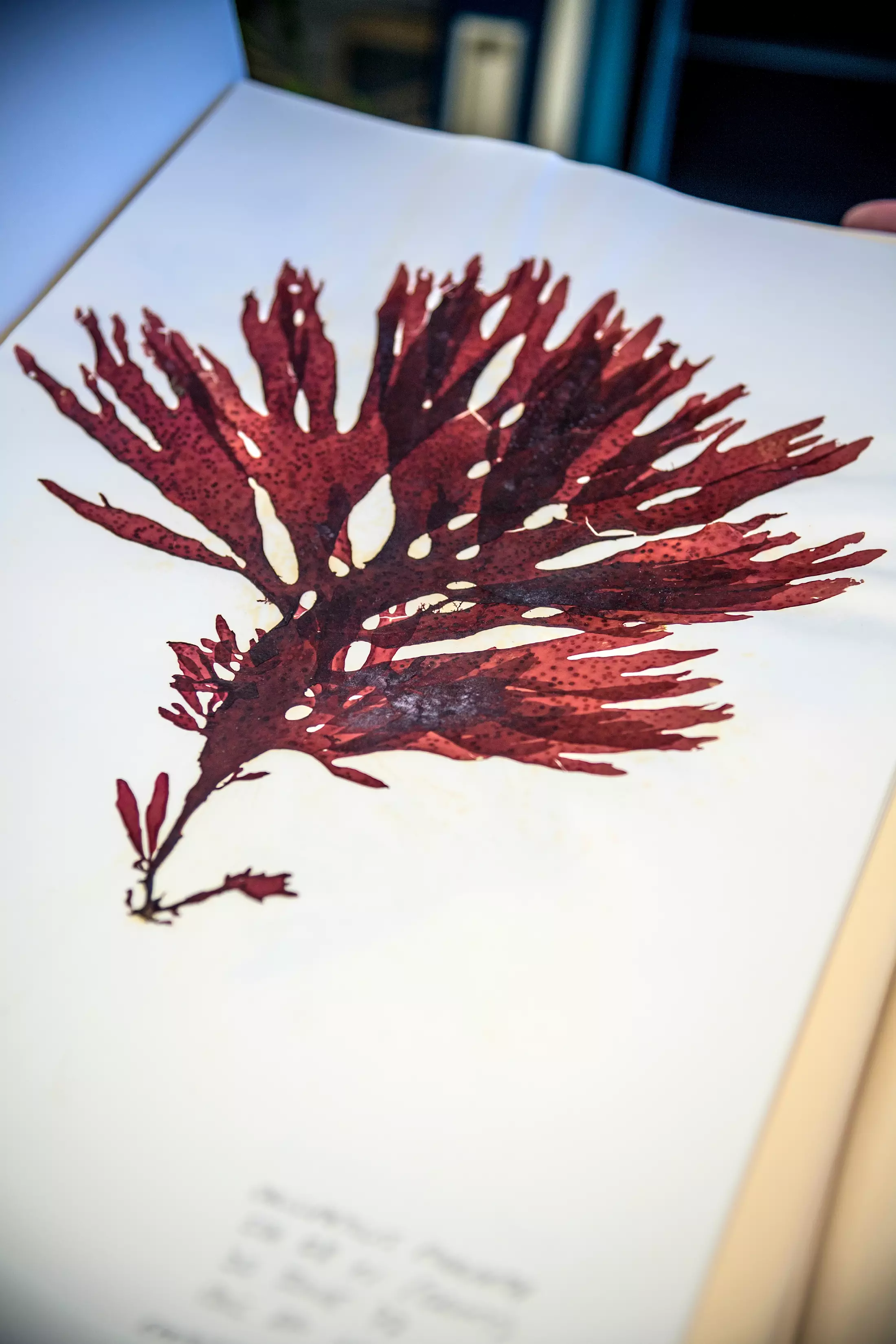Seaweed takes scientists on trip ‘through time’ in the waters of Monterey Bay
Study uses data, locked in century old pressed algae, to reveal the mysteries of Monterey Bay’s marine life
New research led by Monterey Bay Aquarium is helping to unlock the natural history of one of the most studied places on the planet. By tapping into a collection of dried, pressed seaweed — that dates back more than 140 years — researchers with the Aquarium’s Ocean Memory Lab can now offer a window back in time to understand what the bay was like before the impacts of modern human activity.
Read the paper, “Herbaria macroalgae as a proxy for historical upwelling trends in Central California,” at the journal Proceedings of the Royal Society B.
Deep marine canyons, a myriad migratory species and an abundant source of nutrients supplied by natural upwelling have attracted the massive concentration of marine science currently focused on Monterey Bay. Despite this proliferation of study and observation here, scientists had always been limited in their attempts to establish baselines of ecosystem health by the extent of available data, which in Monterey Bay extends back to 1946 when the patterns of its natural upwelling started being recorded.
“This part of California’s Central coast is renowned for the sheer amount of marine life it can sustain. Even through the pressures of the past century, Monterey Bay is still teeming with birds, whales, fishes and seaweeds,” said Monterey Bay Aquarium Chief Scientist Kyle Van Houtan. “These plants and animals were around long before scientists, so we thought if we could find historical samples we might learn something by extracting the information stored in their tissues.”
Using that approach, the Ocean Memory Lab generates new information about the ocean’s past by combing through scientific collections, museums, and other historical archives. These repositories contain specimens of marine life that have data on ocean conditions locked within their fronds, feathers, shells and other tissues. Aquarium scientists use a variety of chemical analyses to unlock the data held within sample tissues to provide more accurate baselines, and help inform decisions intended to maintain or restore ocean health.
“We were able to add nearly seven decades of data, extracted from seaweed samples more than a century old, to better understand historical changes in Monterey Bay,” said Emily Miller, the lead author of the study for the Aquarium and now a researcher at partner institution, the Monterey Bay Aquarium Research Institute. “This information offers us a new perspective on one of the features that makes Monterey Bay home to such diversity, its upwelling cycles. Documenting these patterns helps us to understand shifts in the foundation of the food web, and to make more informed conservation decisions in the future.”
Working with colleagues from Stanford University’s Hopkins Marine Station and the University of Hawaii, Aquarium researchers based the study on data from the chemical analysis of pressed seaweed samples sourced from herbarium collections from several institutions, dating back to 1878, as well as freshly collected specimens. The samples analyzed came from six species of seaweed, also called macroalgae, that included giant kelp, rockweed, sea lettuce, and grape tongue.
“Izzy Abbott, who was professor of biology at Hopkins, helped to curate and build our collection of algae for over 25 years,” said Stephen Palumbi, a professor of marine biology at Stanford University’s Hopkins Marine Station. “She and the algae biologists that came before her knew that preserving specimens was vital. But it took this new approach from Monterey Bay Aquarium to dig into the very atoms of the algae and ask the kelp forest questions about the history of the oceans.”
Researchers calibrated the accuracy of their chemical analysis by comparing nitrogen stable isotopes from a red algae, Gelidium, with the Bakun upwelling index, a record of the natural Monterey Bay phenomenon going back to 1946. They found a high correlation between the index and data derived from the algae samples from 1946-2018, which demonstrated the nitrogen isotopes in the algae could be used to determine the upwelling pattern. Researchers then used older algae specimens to extend the Bakun upwelling index back to 1878, 70 years before it began being monitored.
One of the research’s novel findings, drawn from the additional seven decades of information offered within the seaweed samples, shed more light into ocean conditions in Monterey Bay during the sardine fishery’s famous boom and bust in the 1940s and 1950s. Researchers documented poor upwelling conditions in Monterey Bay in the years immediately prior to the crash. This discovery adds a new dimension to an understanding of what role ecosystem changes may have played in the shift from a sardine-dominated system to one that is anchovy-dominated. It could also further inform how fishery management practices are implemented to respond to environmental conditions, something known as ecosystem-based management.
Source: https://www.sciencedaily.com/releases/2020/06/200616200155.htm


 Taiwan's Guishan Island
Taiwan's Guishan Island OAC
OAC